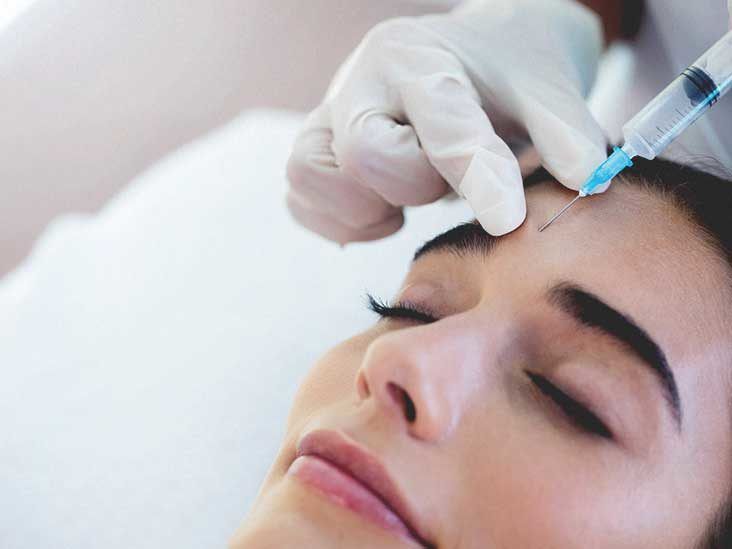Botox is a popular cosmetic treatment known for its ability to reduce the appearance of wrinkles and fine lines. It works by temporarily paralyzing the muscles responsible for facial expressions, resulting in smoother, younger-looking skin. But what happens after 20 years of Botox treatments? This article explores the long-term effects of Botox Injections for Wrinkles in Dubai, including potential changes in muscle behavior, skin elasticity, and overall results.
What is Botox Treatment?
Botox treatment involves injecting small amounts of botulinum toxin into targeted muscles. The toxin blocks nerve signals, preventing the muscles from contracting. This leads to a reduction in wrinkles, especially in areas like the forehead, around the eyes, and between the eyebrows. Botox is primarily used for cosmetic purposes, though it also has medical applications such as treating migraines and excessive sweating. The effects of Botox typically last for three to six months, after which a touch-up treatment is needed.
Effects of Botox After 20 Years:
While Botox is safe for long-term use, the long-term effects of continuous treatments can vary. After 20 years of Botox injections, several changes may occur, both in terms of appearance and muscle function.

Here are some potential outcomes:
Reduced Muscle Activity: Over time, repeated Botox treatments can lead to decreased muscle movement in the treated areas. Some individuals may experience a gradual weakening of the targeted muscles, which may result in less pronounced wrinkles and a smoother appearance.
Skin Changes: Botox helps prevent the formation of new wrinkles, but it does not stop the natural aging process. After 20 years, the skin may still show signs of aging, such as thinning or loss of elasticity. However, Botox may have helped delay the development of deep wrinkles.
Potential for Overuse: If Botox is overused, it could lead to a lack of natural facial expressions. Some individuals may find their face appear "frozen" or less expressive after many years of Botox use. It's important to balance the treatment with the preservation of natural movement.
Muscle Memory: After years of consistent Botox use, some individuals may notice that their muscles retain a memory of the treatment. This could result in a more youthful appearance even with fewer injections, as the muscles may have been trained to relax more easily.
Maintenance and Adjustment: After 20 years of Botox use, it may be necessary to adjust the dosage or injection sites. Your doctor may recommend modifications to ensure that the treatment continues to provide optimal results as your facial structure and skin evolve.
Benefits:
Botox offers several benefits, both in the short and long term:
Wrinkle Reduction: Botox is most commonly known for its ability to smooth wrinkles and fine lines, providing a youthful appearance.
Preventative Aging: Regular Botox treatments can help prevent the formation of new wrinkles by limiting the movement of facial muscles.
Non-Surgical: Botox is a minimally invasive treatment, offering a non-surgical alternative to facelifts and other cosmetic procedures.
Quick Results: Botox provides quick results, with improvements visible within days of treatment and lasting for several months.
Versatility: Botox can be used in various areas of the face, such as the forehead, crow's feet, and frown lines, making it a versatile treatment for overall facial rejuvenation.
FAQs:
How often should I get Botox?
Botox treatments typically last between three to six months, so most people get injections every 3-4 months for maintenance.
Can Botox cause permanent damage?
No, Botox does not cause permanent damage when administered by a skilled professional. The effects are temporary, and any muscle changes are reversible over time.
Does Botox still work after many years?
Yes, Botox can continue to work after many years, although the dosage or frequency of treatment may need to be adjusted to maintain optimal results.
Is Botox safe after 20 years of use?
Botox remains safe even after long-term use, but it's important to consult with your doctor regularly to ensure it's still the right treatment for your needs.
What are the long-term effects of Botox?
Long-term Botox users may experience reduced muscle activity, changes in skin elasticity, and the potential for less pronounced wrinkles. However, Botox is generally safe for long-term use when administered properly.
Conclusion:
After 20 years of Botox treatments, individuals may notice various changes in their appearance and muscle function. Botox can continue to provide smooth, youthful skin, though adjustments may be necessary as the body and face age. Regular consultations with a skilled doctor ensure that Botox remains an effective and safe treatment option over time, helping to maintain a natural and youthful appearance for years to come.
